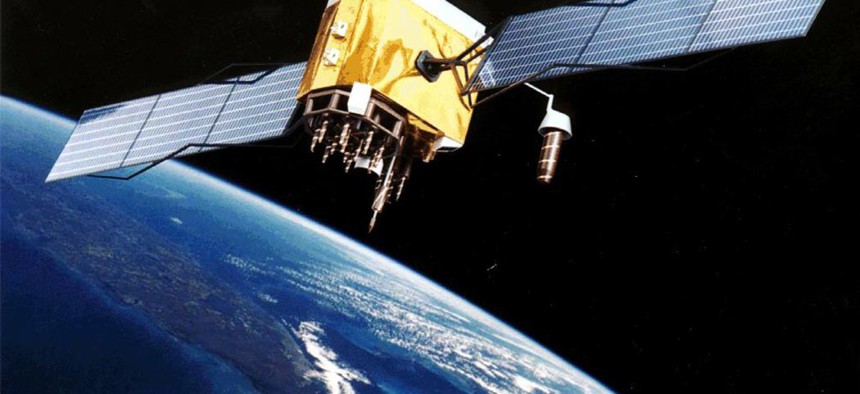Air Force looks to protect space with new enterprise vision
Gen. John Hyten recently announced the Space Enterprise Vision to counter the ever-emerging threats to the space domain.
Since the beginning of orbital travel, space has pretty much been the United States’ back yard, with the exception of Sputnik and a few ventures by other countries. But that is changing, and the Air Force Space Command has taken note, with its recently released Space Enterprise Vision.
Military officials such as Gen. John Hyten, commander of the Space Command, have warned of the growing threat to the space enterprise from space debris, rouge launches or cyber attacks. The SEV was the culmination of an AFSPC-commissioned study examining ways to make national space security more resilient. The study addressed findings of previous inquiries identifying U.S. space enterprises as not resilient enough to be successful in conflict.
“In the recent past, the United States enjoyed unchallenged freedom of action in the space domain,” Hyten said. “Most U.S. military space systems were not designed with threats in mind, and were built for long-term functionality and efficiency, with systems operating for decades in some cases. Without the need to factor in threats, longevity and cost were the critical factors to design and these factors were applied in a mission stovepipe. This is no longer an adequate methodology to equip space forces.”
Recognizing that acquisition and programmatic decisions can’t occur in mission stovepipes but must be driven by the mission, the SEV also accounts for increasing space threats, providing a guiding vision for the force to respond. It describes an integrated approach across various mission areas from mission effects of the warfighter that include communications and positioning to protecting space assets.
“It's a competition that I wish wasn't occurring, but it is. And if we're threatened in space, we have the right of self-defense, and we'll make sure we can execute that right,” Hyten, told 60 Minutes last year, regarding the competition and potential escalation the space domain could see.
In fact, U.S. Strategic Command Commander Adm. Cecil Haney has warned about the seriousness of the space threat. “For 70 years, we have deterred and assured… For decades, we have sustained while others have modernized… developing and utilizing counterspace activities,” he said, noting that strategic deterrence in the space domain is as important as ever.
One way the military, and Stratcom in particular, are addressing space threats, which include debris traveling at 17,000 miles per hour, are data and space situational awareness agreements with other nations. The most recent agreement was forged with United Arab Emirates Space Agency on the sidelines of the 32nd Space Symposium. The agreement, just like several minted within the last year or so, services and information. The UAE joins the United Kingdom, the Republic of Korea, France, Canada, Italy, Japan, Israel, Spain, Germany and Australia, the European Space Agency and the European Organization for the Exploitation of Meteorological Satellites in entering similar partnerships with Stratcom.
“The future space enterprise will maintain our nation's ability to deliver critical space effects throughout all phases of conflict,” Hyten said. “Operating as an enterprise as opposed to a set of independent platforms improves resiliency and is critical to the ability to survive and deliver effects in a contested environment.”
The SEV will use a new optimizing concept called “resilience capacity” to both characterize and evaluate space capabilities by measuring how well space enterprise forces respond to known threats and how quickly they can adapt to future threats. This capability will replace the traditional “functional capability” that did not account for emerging threats, the Air Force said.
“The future space enterprise will be built by changing how we architect, develop, acquire, and operate our space systems,” Hyten said. “Going forward, we will rigorously focus on a clear definition of warfighter requirements with programs acquired using greater horizontal integration across the space enterprise. We will also move toward shorter program life cycles and decreased time between constellation updates, which improves the availability of new technology on-orbit.”
The Air Force will also be working with interagency partners in keeping space safe. The Space Command’s SEV study was co-commissioned by the National Reconnaissance Office to incorporate visions of military and intelligence partners.




